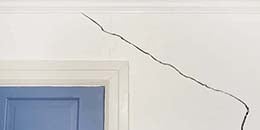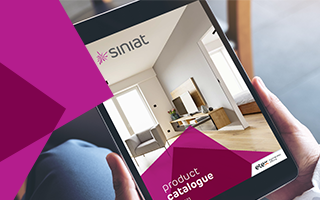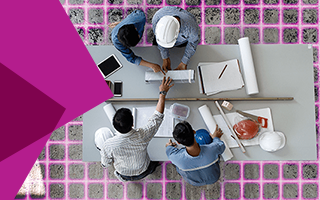Let’s face it: Most property owners don’t give plasterboard a second thought after installation, unless a problem occurs. We diligently perform termite inspections, annually inspect air-conditioning systems and touch up paint when needed, but plasterboard inspection is not up there on our list of things to do. Should it be?
Like with most things, regular checks of the plasterboard in wall and ceiling systems can help to identify issues early, and timely maintenance can help to extend the lifetime of the board.
It’s a substrate
Plasterboard is typically installed as a substrate for further decoration finishes like painting, wallpaper or tiles. As such the maintenance of the decorative finish takes priority over the maintenance of plasterboard itself.
Where paint is used, the paint manufacturer’s recommendations should be followed for maintenance and cleaning. The same goes for wall paper or tiles. Cleaning methods and products should be aligned with the recommendations of the manufacturer of the decorative finish.
How long does plasterboard last?
Siniat not only guarantees its products, but the whole wall or ceiling system for a period of ten years under the Siniat Warranty (subject to the terms and conditions stated in the warranty booklet.)
Under ideal circumstances the lifespan of a properly installed plasterboard system can be measured in decades, and provided that moisture doesn’t get to it, last as long as the building.
There are various factors that can influence the durability of plasterboard. The most important ones are:
-
Ventilation: Good ventilation with the ability to control moisture and condensation will improve the lifespan of plasterboard.
-
Temperature: A big fluctuation in temperature can increase movement of the structure, leading to more plasterboard cracks
-
Moisture: The frequency and duration of wet and damp conditions (e.g. water leaks) may have an influence on board performance and also lead to mould growth, and should be inspected and repaired immediately.
-
 Movement: Movement from substrate framing can result in plasterboard cracks. Allowance for such framing movements by including control joints at the right intervals can help reduce the movement exerted on the board. Make a record of surface cracks and monitor them over time.
Movement: Movement from substrate framing can result in plasterboard cracks. Allowance for such framing movements by including control joints at the right intervals can help reduce the movement exerted on the board. Make a record of surface cracks and monitor them over time.
Plasterboard maintenance
Maintenance of plasterboard is likely to only be necessary as required, but Siniat recommends annual checks of wall and ceiling systems to assess the condition of the board.
Superficial dents or scratches on the surface of the board can easily be fixed. The following damage might require a more in-depth look by a professional:
-
Cracks or compression fractures. Cracks can be an indication of structural damage and should be monitored. Plasterboard itself is not known for cracking unless an external force acts upon it. Plasterboard cracks are usually indicative of movement elsewhere in the building structure or sub-frame, and should be monitored and inspected when necessary. (Read more in our blog Can hot, dry weather increase the risk of plasterboard cracks?).
-
Fire or excessive heat damage. Plasterboard may be able to withstand a fire, but board affected by smoke or fire should be assessed by a professional. It may be necessary to replace the board as the heat can cause damage to the performance of the liner paper, even if the rest of the board seems to be intact.
-
Water damage. When plasterboard is exposed to elevated levels of moisture for an extended period, it can affect the integrity of the plasterboard and its ability to perform its intended function, and may have to be replaced. Read more in our blog Wet plasterboard: Repair or replace?.
-
Mould growth. Where there is mould, there is moisture. The source of the moisture will have to be investigated and in the case of a water leak, be repaired immediately. Surface mould growth that occurs as a result of high humidity or poor ventilation can easily be rectified by proper cleaning and improving the ventilation in the room. In situations where the mould growth extends into the core of the board, the board may have to be replaced.
-
Dents and holes. Superficial dents or holes are easy to repair. More serious dents or holes may extend into the core of the board, weaken the structure and expose it to moisture. In such situations the damaged area of the board will have to be replaced.
Remember that all repairs should be conducted in a way that maintains the installation requirements of AS/NZS 2589:2007 and Siniat’s technical literature.
Perform an annual check
As with most things, plasterboard systems can continue to provide excellent performance for many years if maintained well.
Siniat recommends an annual check of plasterboard wall and ceiling systems. Look out for the signs of damage discussed above, as well as sagging and discolouration.
Remember that protection from moisture is the key strategy to preserve the integrity of the board. Repair visible damage that extends to the core of the board immediately and repaint where necessary.
For more information, download the On Board - Plasterboard maintenance, or refer to the Siniat Blueprint Technical Manual and Plasterboard Installation Guide. You can also contact the Siniat Technical Team for advice by calling 1300 724 505.







